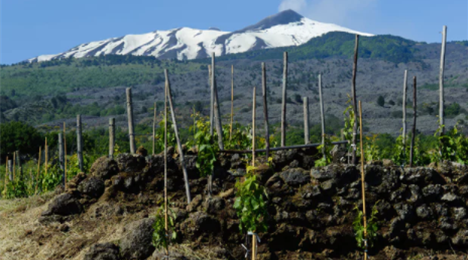http://2.bp.blogspot.com/-vcTfyr3Orpk/WadvG6t9xnI/AAAAAAAACIc/fJEpL9YNmKwg1j2fDthILM-ucgF_HP0IwCK4BGAYYCw/s1600/2017-08-31_07-35-42.png

Researchers have discovered traces of what could be the world’s oldest wine at the bottom of terracotta jars in a cave in Sicily, showing that the fermented drink was being made and consumed in Italy more than 6,000 years ago.
Previously scientists had believed winemaking developed in Italy around 1200 BC, but the find by a team from the University of South Florida pushes that date back by at least three millennia.
“Unlike earlier discoveries that were limited to vines and so showed only that grapes were being grown, our work has resulted in the identification of a wine residue,” said Davide Tanasi, the archeologist who led the research.
“That obviously involves not just the practice of viticulture but the production of actual wine – and during a much earlier period,” Tanasi said.

Published in the Microchemical Journal, the finding was significant because it was “the earliest discovery of wine residue in the entire prehistory of the Italian peninsula”, the researchers said.
The five organic residue samples taken from late copper age storage jars found in 2012 in a limestone cave on Monte Kronio, near the fishing harbour of Sciacca on Sicily’s south-west coast, were dated to the fourth millennium BC.
“We conducted chemical analysis on the ancient pottery and identified the presence of tartaric acid and its salt,” Enrico Greco, a chemistry researcher at the University of Catania who was involved in the research, told the Guardian.
Known as cream of tartar, the salt of tartaric acid, which is the main acid component in grapes, develops naturally during winemaking. “The presence of these molecules allows us to confirm the use of this vessel as a wine container,” Greco said.
While some experts have suggested humans may have been making wine as long as 10,000 years ago, the earliest known evidence of winemaking – also about 6,000 years old – was uncovered in 2011 near the village of Areni in Armenia.
But in that case scientists said they could not exclude the possibility that traces of malvidin found in the residue they recovered could have come from pomegranates, a common fruit in Armenia and its national symbol.
In the Sicilian find, the malvidin can only have come from grapes since pomegranates did not exist in the area.
The discovery “fills us with joy”, said Alessio Planeta, a winemaking expert and historian from the area, which remains one of Italy’s most important wine-producing regions. “Before this, we used to thinking Sicily’s wine culture arrived with the island’s colonisation by the ancient Greeks.”
guardian.co.uk © Guardian News & Media Limited 2010
Published via the Guardian News Feed plugin for WordPress.
Traces of 6,000-year-old wine discovered in Sicilian cavehttps://goo.gl/KKwfN4











0 comments:
Post a Comment